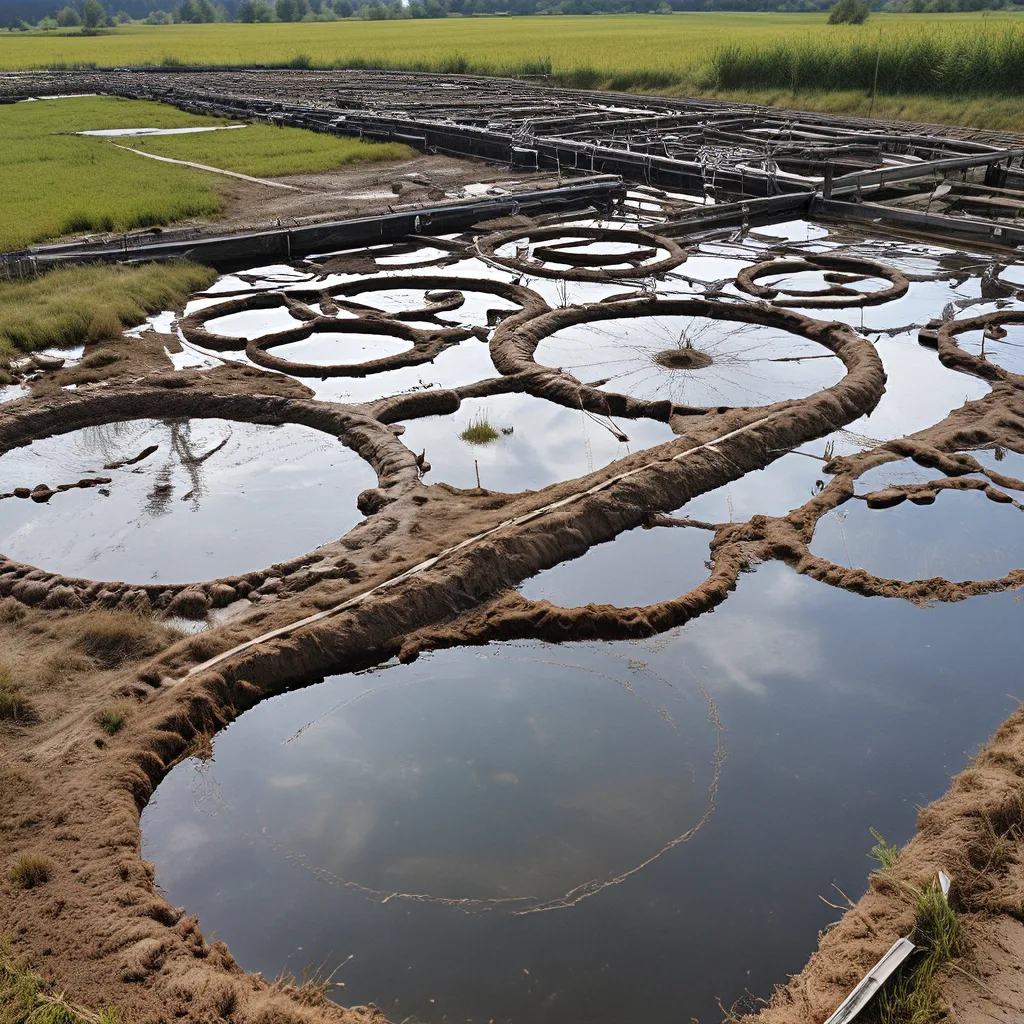
Turning Waste into Wealth: The Untapped Potential of Wastewater
As I stand at the edge of the Blue Plains Advanced Wastewater Treatment Plant in Washington, D.C., I’m struck by the sheer scale and complexity of this facility. It’s a far cry from the simple septic tanks and leaky pipes that many of us associate with wastewater management. In reality, the world of wastewater treatment is a bustling hub of innovation, where science and technology converge to transform what was once considered waste into a valuable resource.
Unlocking the Bioeconomy: Wastewater as a Feedstock
The Department of Energy’s Bioenergy Technologies Office (BETO) has been at the forefront of this transformation, exploring ways to harness the power of wet waste streams and gaseous emissions for the production of biofuels, bioproducts, and even bioenergy. These so-called “wet wastes” — including municipal sewage, animal manure, and industrial effluents — represent a significant and underutilized set of feedstocks for the renewable energy and chemical industries.
One of the key advantages of these waste streams is that they are readily available and don’t require any additional land-use changes. As BETO’s report on “Biofuels and Bioproducts from Wet and Gaseous Waste Streams” points out, the United States has the potential to utilize 77 million dry tons of wet waste per year, which could generate a staggering 1,079 quadrillion British thermal units (Btu) of energy. When you factor in the potential of gaseous feedstocks, the total energy potential climbs even higher, to more than 23 quadrillion Btu annually — that’s nearly a quarter of the country’s total primary energy consumption in 2015!
Exploring the Conversion Options
So, how exactly do we transform these wet and gaseous waste streams into valuable bioproducts and bioenergy? BETO has identified several promising technologies, each with its own unique advantages and challenges.
Hydrothermal Processing: A Versatile Approach
One technology that has caught BETO’s attention is hydrothermal processing. This approach uses high temperatures and pressures to convert diverse feedstock blends, including municipal sludge, into valuable products like diesel blendstock. Researchers at the Pacific Northwest National Laboratory have already demonstrated the potential of this technology, and larger-scale pilot efforts are underway.
Hydrothermal processing offers several benefits over traditional methods. It can handle diverse feedstock blends, which is crucial given the regional variations in waste composition. It also has the potential to replace energy-intensive drying processes, making it a more sustainable option.
Alternatives to Traditional Anaerobic Digestion
Another area of focus for BETO is exploring alternatives to traditional anaerobic digestion (AD). While AD has been widely deployed for treating sewage, animal manure, and other organic wastes, it has its limitations. The process only reduces waste volumes by about 50%, and the resulting biogas requires substantial and costly cleanup before it can be used as a vehicle fuel or injected into natural gas pipelines.
To address these drawbacks, BETO is investigating alternative reactor designs, such as anaerobic membrane bioreactors, which have the potential to reduce capital costs dramatically and produce biogas with a higher methane content. The office is also exploring ways to arrest the final stage of the AD process to produce higher-value precursors to bioproducts and liquid biofuels, rather than just biogas.
Collaboration and Technical Assistance: Empowering Local Governments
Recognizing the importance of local context in waste management, BETO has launched the Waste-to-Energy Technical Assistance for State, Local, and Tribal Governments program. This initiative pairs national laboratory experts with state, local, and tribal decision-makers, providing them with the technical assistance they need to advance waste-to-energy technologies.
Through this program, BETO helps communities evaluate the most sensible end-uses for their waste, whether it’s repurposing for on-site heat and power, producing transportation fuels, or recovering valuable nutrients. The program also addresses knowledge gaps, specific challenges, and planning and implementation strategies, ensuring that communities have the tools they need to make informed decisions.
The Evolving Bioeconomy: Challenges and Opportunities
As exciting as these developments are, it’s important to remember that the journey towards a robust bioeconomy is not without its challenges. Waste feedstock characteristics are highly regionalized, and waste management decisions are often driven by state and municipal policies. Navigating this complex landscape requires a deep understanding of local conditions and a willingness to adapt solutions accordingly.
Moreover, many of the technologies being explored by BETO are still in the early stages of development, with uncertainties around scalability, cost-effectiveness, and long-term viability. As researchers and policymakers continue to explore these options, they must remain cautious and transparent, acknowledging the limitations of the available data and the potential for evolving conclusions.
Embracing the Future: Waste-to-Value Innovations
Despite these challenges, I can’t help but feel a sense of optimism as I look towards the future of wastewater treatment and the bioeconomy. The innovative solutions being developed by BETO and others in the field hold immense promise, not just for reducing waste and environmental impact, but for creating new economic opportunities and sustainable pathways for the future.
As I leave the Blue Plains facility, I’m struck by the realization that the future of waste management is far more than just flushing and forgetting. It’s a dynamic, ever-evolving field, where science, technology, and ingenuity converge to transform what was once seen as waste into a valuable resource. And with continued investment, collaboration, and a willingness to embrace the challenges ahead, I believe we can unlock the full potential of the bioeconomy and create a cleaner, more sustainable future for all.